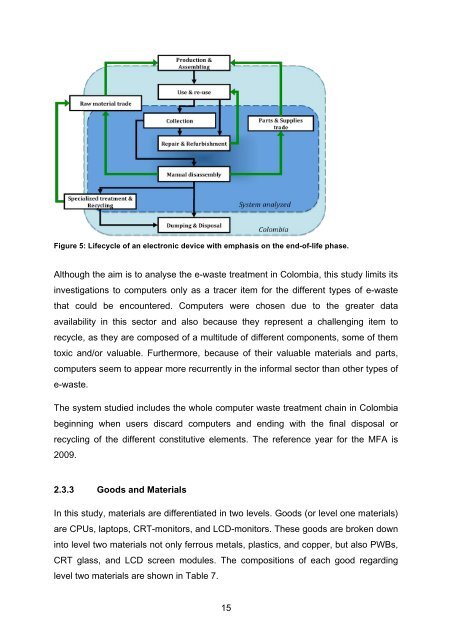10 07 29 Master thesis Juliana Leon - e-Waste. This guide
10 07 29 Master thesis Juliana Leon - e-Waste. This guide
10 07 29 Master thesis Juliana Leon - e-Waste. This guide
You also want an ePaper? Increase the reach of your titles
YUMPU automatically turns print PDFs into web optimized ePapers that Google loves.
Figure 5: Lifecycle of an electronic device with emphasis on the end-of-life phase.<br />
Although the aim is to analyse the e-waste treatment in Colombia, this study limits its<br />
investigations to computers only as a tracer item for the different types of e-waste<br />
that could be encountered. Computers were chosen due to the greater data<br />
availability in this sector and also because they represent a challenging item to<br />
recycle, as they are composed of a multitude of different components, some of them<br />
toxic and/or valuable. Furthermore, because of their valuable materials and parts,<br />
computers seem to appear more recurrently in the informal sector than other types of<br />
e-waste.<br />
The system studied includes the whole computer waste treatment chain in Colombia<br />
beginning when users discard computers and ending with the final disposal or<br />
recycling of the different constitutive elements. The reference year for the MFA is<br />
2009.<br />
2.3.3 Goods and Materials<br />
In this study, materials are differentiated in two levels. Goods (or level one materials)<br />
are CPUs, laptops, CRT-monitors, and LCD-monitors. These goods are broken down<br />
into level two materials not only ferrous metals, plastics, and copper, but also PWBs,<br />
CRT glass, and LCD screen modules. The compositions of each good regarding<br />
level two materials are shown in Table 7.<br />
15
















